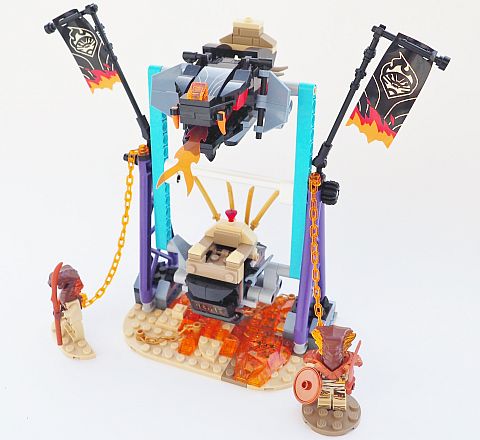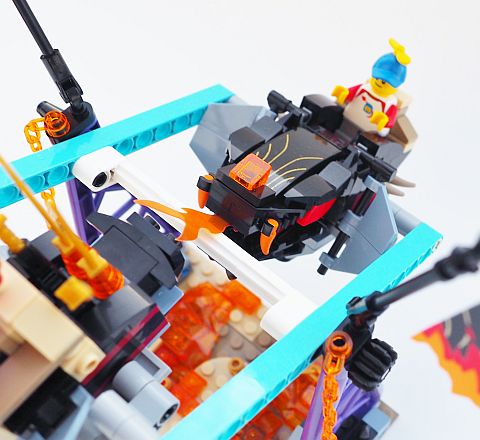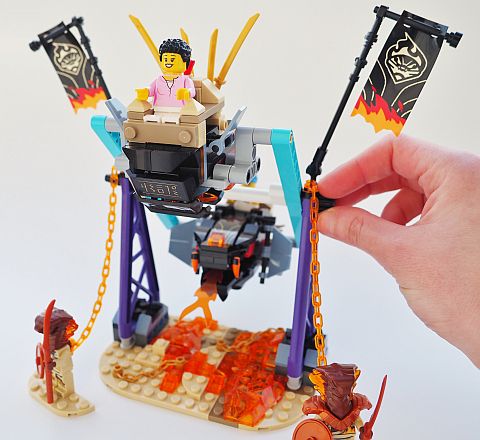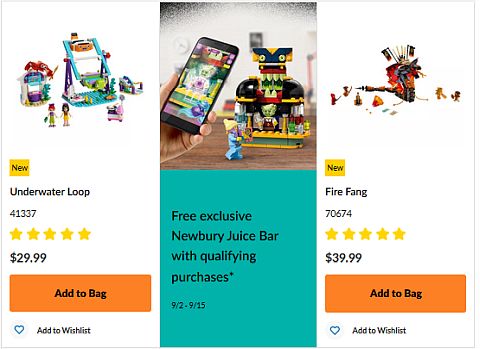Just a reminder that LEGO VIP members get early access to two new sets starting today (general release for both sets is October 1st); the #75252 LEGO Star Wars Ultimate Collector Series Imperial Star Destroyer, and the #10267 LEGO Creator Expert Gingerbread House. We have talked about both sets already (see: LEGO Star Wars Star Imperial Star Destroyer and LEGO Gingerbread House Coming Soon!), but I included the most essential information for your convenience, along with some additional details.
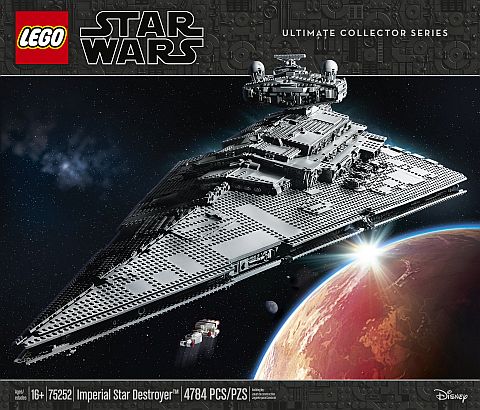
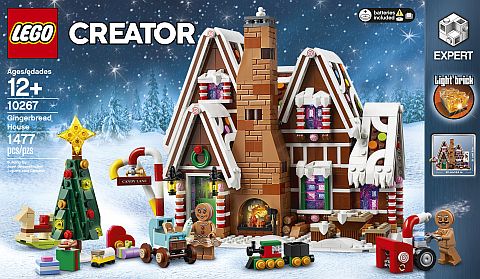
First of all, to celebrate the launch of the #75252 LEGO Star Wars Imperial Star Destroyer, LEGO is offering Double VIP Points when you purchase the set, but only this weekend, September 18th to September 22nd. I expect that this will create quite a bit of traffic at the Online LEGO Shop, so if you want to take advantage of the promotion, make your purchase as early as you can. This offer is valid both at official LEGO stores and the Online LEGO Shop.
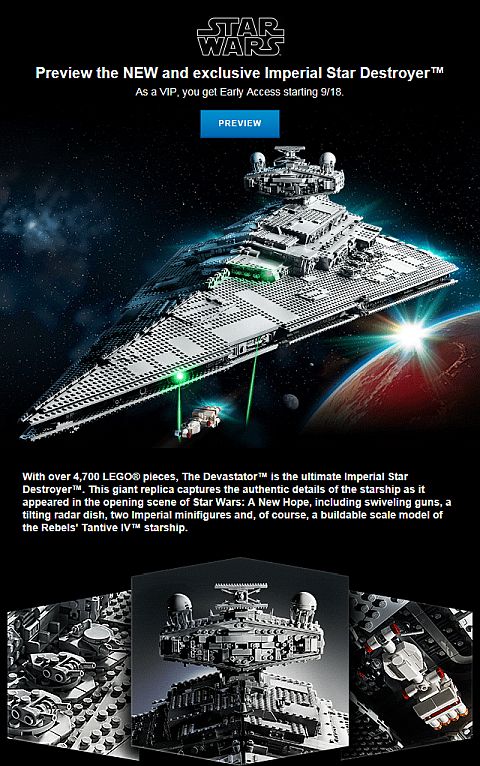
Here is the official description of the set: Build and display an icon of the Galactic Empire – the Devastator. With over 4,700 LEGO pieces, this #75252 Ultimate Collector Imperial Star Destroyer model captures all the authentic details of the starship as it appeared in the opening scene of Star Wars: A New Hope, including swiveling guns, a tilting radar dish, huge engine exhausts, intricate surface detailing and of course a buildable scale version of the Rebels’ Tantive IV starship to chase down. This galactic civil war UCS set also includes a display stand with informational fact plaque and two Imperial minifigures, making it the perfect LEGO Star Wars collectible for discerning fans. Includes Imperial Officer and Imperial Crewmember minifigures. Model on display stand measures over 17” (44cm) high, 43” (110cm) long and 26” (66cm) wide, and over 14” (37cm) high without stand. 4,784 pieces. Price: $699.99 – BUY HERE

To really get a sense of the size and scale of this set, German LEGO fan site Stonewars.de shared the following very helpful size comparison, showing the #75252 LEGO Star Wars Imperial Star Destroyer next to previously released LEGO Star Wars Ultimate Collector Series sets. It’s definitely menacing and massive!
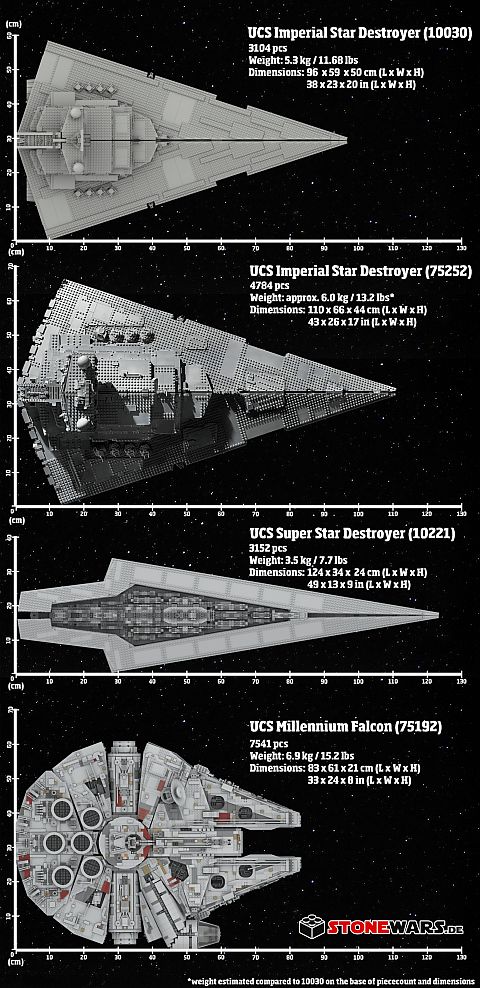
The second set released today is the #10267 LEGO Creator Expert Gingerbread House. This is the 10th set in the LEGO Creator Winter Village collection, featuring a lovely house with tons of details and accessories for the gingerbread family. And it also comes with a light-brick!
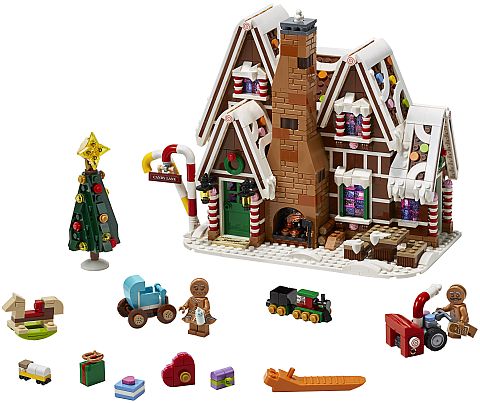
Here is the official description of the set: Enjoy a festive build and play experience with the #10267 LEGO Creator Expert 10267 Gingerbread House. A treasure chest of magical details, this amazing model features frosted roofs with colorful candy buttons and a delicious facade with candy-cane columns, glittery windows and a tall chimney stack with a glowing fireplace. Inside the house, there is an array of fun details and candy furnishings including a tasteful bedroom with chocolate bed and cotton candy lamp, and a bathroom with the essential toilet and bathtub. This wonderful LEGO Gingerbread House sets the scene for imaginative adventures with the gingerbread family. Children can light up the cozy fireplace, help clear the sidewalk with the snow blower and nestle the gingerbread baby in its carriage. It also includes a decorated Christmas tree with wrapped gifts and toys, including a rocking horse and a toy train. This advanced LEGO set delivers a challenging and rewarding building experience and makes a great seasonal centerpiece for the home or office. Includes gingerbread man, woman, and baby figures. Measures over 8” (21cm) high, 10” (26cm) wide and 5” (13cm) deep. 1,477 pieces. Price: $99.99 – BUY HERE
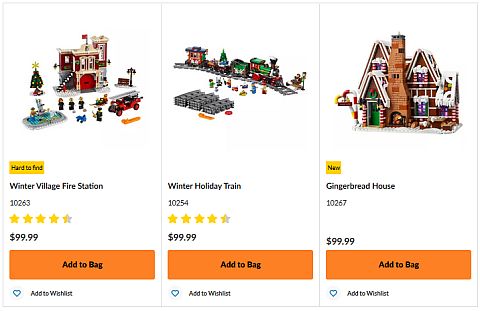
What do you think? How do you like the new LEGO Star Wars Star Destroyer and the LEGO Creator Gingerbread House? Are you planning to get either of them? Feel free to share your thoughts and discuss in the comment section below!
And you might also like to check out the following related posts:
- LEGO Star Wars Imperial Star Destroyer (press-release)
- LEGO Gingerbread House Coming Soon! (press-release)
- September 2019 – New LEGO Sets & Promotions




